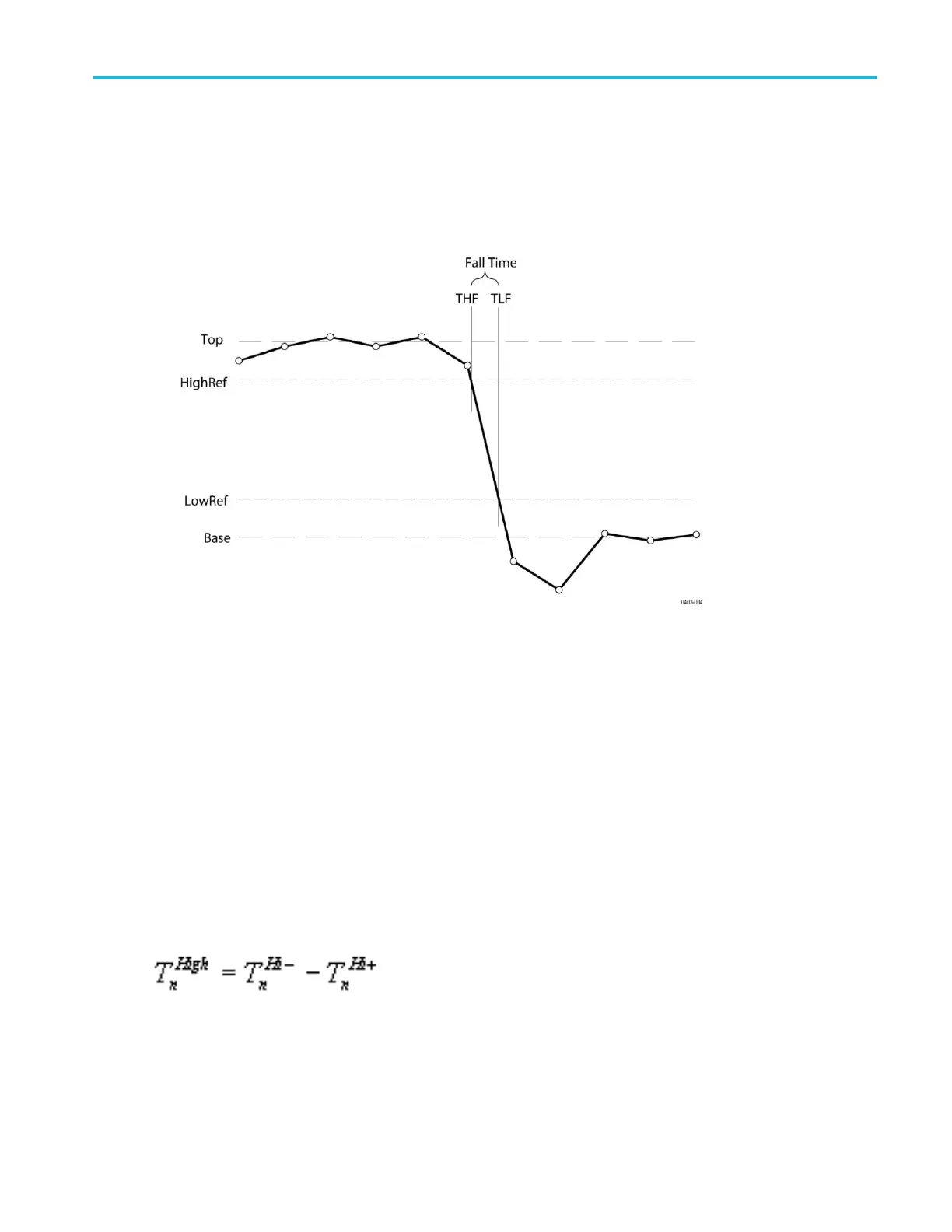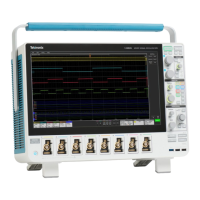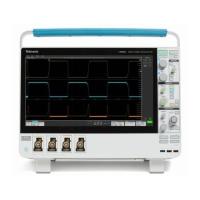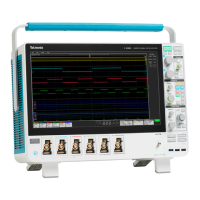The following figure shows a falling edge with the two edges necessary to calculate a Fall measurement. The figure shows the
default high reference level which is 90% of Top and the default low reference level which is 10% of Base.
1. Searching from Start to End, find the first sample in the measurement zone greater than HighRef.
2. From this sample, continue the search to find the first (negative) crossing of edge of HighRef. The time of this edge is THF.
(Use interpolation if necessary.)
Figure 11: Fall Time
3. From THF, continue the search, looking for a crossing of LowRef. Update THF if subsequent HighRef crossings are found.
When a LowRef crossing is found, it becomes TLF. (Use interpolation if necessary.)
4. FallTime = TLF – THF
Frequency measurement algorithm
Frequency is the reciprocal of the period. Frequency is typically measured in Hertz (Hz) where 1 Hz = 1 cycle per second.
Frequency = 1 / Period
High Time measurement algorithm
High Time is the amount of time that a waveform cycle is above the High reference voltage level.
The application calculates the measurement using the following equation:
Where:
T High is the high time.
T Hi- is the High reference crossing on the falling edge.
T Hi+ is the High reference crossing on the rising edge.
Measurement algorithms
MSO54, MSO56, MSO58, MSO58LP, MSO64 Help 449

